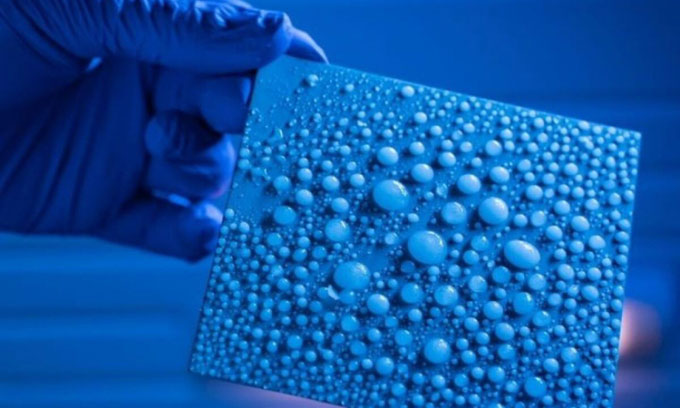In an experiment conducted by the University of Houston, water droplets just a few nanometers wide can remain in liquid form at temperatures lower than the usual freezing point.
Water is typically believed to freeze at 0 degrees Celsius. However, a new experiment from the research team at the University of Houston reveals that tiny water droplets can remain liquid at temperatures as low as -44 degrees Celsius when in contact with a soft surface, as reported by New Atlas on December 7. The new study has been published in the journal Nature.

Tiny water droplets can maintain a liquid state below the normal freezing point due to contact with a soft surface. (Photo: University of Houston)
The freezing point of water is the temperature at which water molecules begin to solidify. The first molecules to transition are those in contact with the cold air at the surface. The ice crystals they form then promote the freezing of nearby molecules. This process continues until the entire body of water turns into ice.
A droplet of water will freeze at some point within the range of 0 degrees Celsius to -38 degrees Celsius. However, the new research has surpassed this threshold. The key factor is the type of surface the water contacts, the scientists stated. Ice crystals easily form on hard surfaces, but soft surfaces like oil or gel can inhibit this formation for a longer time. Additionally, smaller droplets can remain liquid longer than larger ones.
To investigate the transition from water to ice, the team conducted experiments with droplets only 2 nanometers wide, whereas the typical size is about 100 nanometers. They confined water into the pores of a membrane made from anodized aluminum oxide (which covers metal with a protective oxide layer). The nano droplets were encapsulated in octane oil to keep the contact surface “soft.”
“Studying the freezing temperature of water droplets just a few nanometers wide has been a challenge that remained unsolved. Now, with new measuring tools, we can explore the freezing of water droplets from micrometer scale down to 2 nanometers,” said Hadi Ghasemi, a member of the research team.
This research could help develop new methods to reduce ice formation on aircraft surfaces, wind turbines, or other infrastructures, while also improving cold storage systems for food or tissues without damaging cells during ice crystal formation.


















































